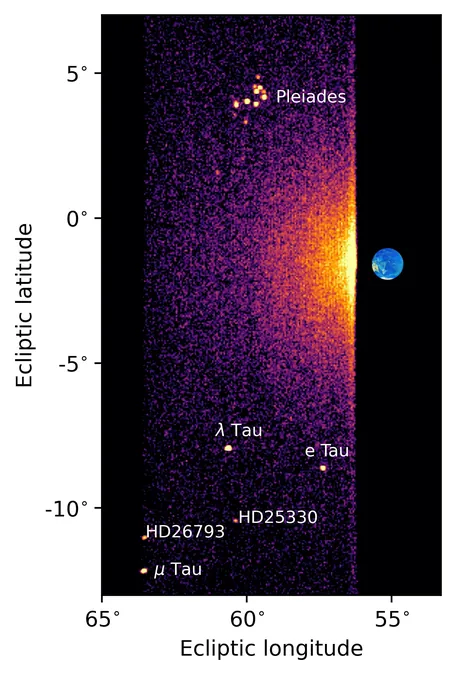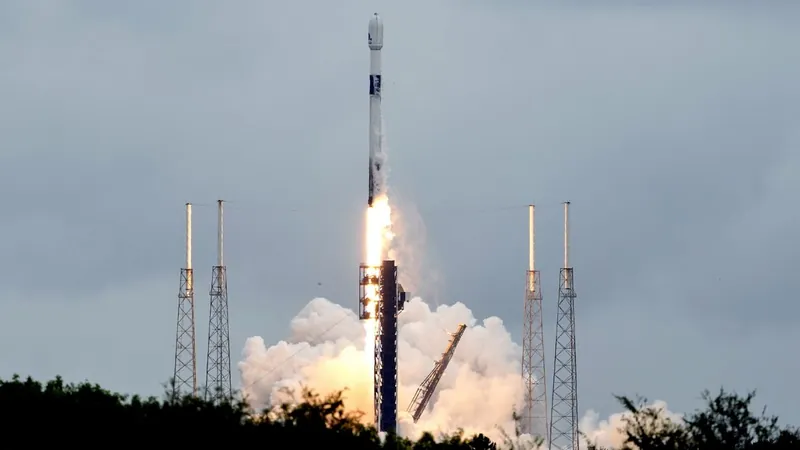
Major Milestone Achieved: Jupiter-Bound Spacecraft's Instrument Passes Crucial Test!
2024-10-09
Author: Olivia
Groundbreaking Achievement for Space Exploration
In a groundbreaking achievement for space exploration, the European Space Agency (ESA)’s Jupiter Icy Moons Explorer (Juice) spacecraft has successfully completed an in-flight test of its Ultraviolet Spectrograph (UVS) instrument. The spacecraft passed by the Earth and the moon in mid-August, utilizing a gravity assist maneuver that sets the stage for its upcoming journey to the Jovian system.
Successful In-Flight Test
During this historic maneuver, UVS imaged the ultraviolet (UV) emissions from both our planet and its satellite, the moon—data that met the expectations of scientists and confirmed the instrument’s operational capabilities. While laboratory testing prior to launch couldn't fully demonstrate the instrument's performance, this in-flight test marks a significant leap forward.
Project Manager's Enthusiasm
Steven Persyn, the Juice-UVS project manager at Southwest Research Institute (SwRI), expressed enthusiasm about the results: "This high-fidelity test confirmed what the instrument is supposed to do. We can now be confident that the data we will gather from Jupiter's moons will be just as accurate."
UVS Instrument Specifications
The UVS instrument itself is impressively compact at just over 40 pounds and requires only 7.5 watts of power—making it smaller than a microwave oven. Once the Juice mission reaches the Jovian system, UVS will play a crucial role in analyzing the elemental and molecular composition of the atmospheres of Jupiter's largest moons: Europa, Ganymede, and Callisto. All three moons are believed to harbor liquid water beneath their icy shells, making them prime candidates for the search for extraterrestrial life.
Ganymede: A Unique Moon
Excitingly, Ganymede stands out as it is the only moon in our solar system known to possess its own internal magnetic field, which generates auroras similar to Earth's northern and southern lights. This characteristic, coupled with the mission’s scientific objectives, positions Ganymede as a potential habitat for life beyond our planet.
Detailed Observations of Jupiter and Io
In addition to the moons, the Juice spacecraft will conduct detailed observations of Jupiter and study the gases emitted by Io, a volcanic moon that disperses through the Jovian magnetosphere. The data collected during the gravity assists—particularly the UV emissions from Earth’s atmosphere—will provide a valuable benchmark for observing Ganymede's atmospheric features, including its auroras.
Ambitious Journey Ahead
Juice is not just operating alone; it’s set to embark on a staggering 4.1 billion-mile journey—approximately 6.6 billion kilometers—over the next eight years, involving multiple gravity assist maneuvers, including one around Venus and another towards Earth.
Collaborative Exploratory Effort
Moreover, Juice is part of an interconnected exploratory effort alongside NASA’s upcoming Europa Clipper mission, which is set to reach the Jupiter system 15 months earlier. The sister project will focus on Europa’s habitability, while the coordination between UVS aboard Juice and Europa-UVS aboard Clipper is believed to enhance both missions' effectiveness.
Conclusion: A Global Commitment
The development of Juice's instruments represents a collaboration that spans across 15 European nations, Japan, and the United States. SwRI's UVS team includes notable institutions such as the University of Colorado Boulder and SETI, demonstrating the international commitment to unraveling the mysteries of our solar system.
Anticipation for Scientific Contributions
As anticipation builds for its rich scientific contributions, the Juice mission reinforces humanity’s quest to explore the potential for life beyond Earth, understanding not just Jupiter and its moons but the broader complexities of gas giants across the universe. Stay tuned as we follow this remarkable journey!









 Brasil (PT)
Brasil (PT)
 Canada (EN)
Canada (EN)
 Chile (ES)
Chile (ES)
 España (ES)
España (ES)
 France (FR)
France (FR)
 Hong Kong (EN)
Hong Kong (EN)
 Italia (IT)
Italia (IT)
 日本 (JA)
日本 (JA)
 Magyarország (HU)
Magyarország (HU)
 Norge (NO)
Norge (NO)
 Polska (PL)
Polska (PL)
 Schweiz (DE)
Schweiz (DE)
 Singapore (EN)
Singapore (EN)
 Sverige (SV)
Sverige (SV)
 Suomi (FI)
Suomi (FI)
 Türkiye (TR)
Türkiye (TR)